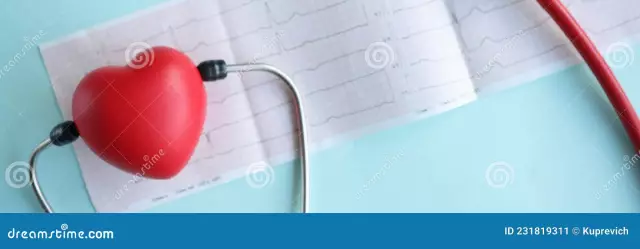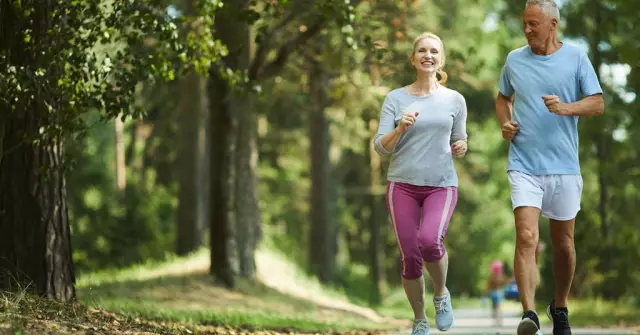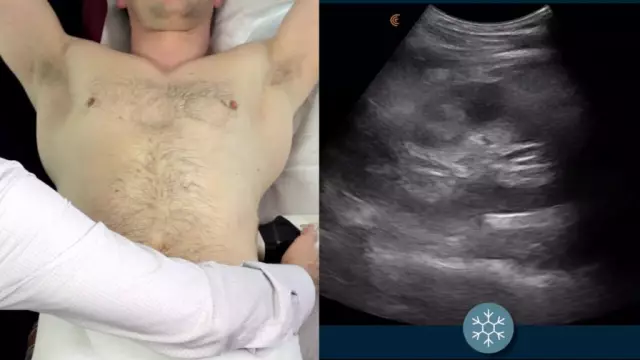- Author Rachel Wainwright [email protected].
- Public 2023-12-15 07:39.
- Last modified 2025-11-02 20:14.
Kidney
The kidneys are paired parenchymal organs that form urine.

Kidney structure
The kidneys are located on both sides of the spine in the retroperitoneal space, that is, the peritoneal sheet covers only their front side. The boundaries of the location of these organs vary widely, even within the normal range. Usually the left kidney is located slightly higher than the right one.
The outer layer of the organ is formed by a fibrous capsule. The fibrous capsule is covered with fat. The renal membranes, together with the renal bed and the renal pedicle, consisting of blood vessels, nerves, ureter and pelvis, belong to the fixation apparatus of the kidney.
Anatomically, the structure of the kidney resembles that of a bean. The upper and lower pole are distinguished in it. The concave inner edge, into the depression of which the renal pedicle enters, is called the gate.
In the section, the structure of the kidney is heterogeneous - the surface layer of a dark red color is called the cortex, which is formed by the renal corpuscles, distal and proximal tubules of the nephron. The thickness of the cortical layer varies from 4 to 7 mm. The deep layer of light gray color is called the medulla, it is not continuous, it is formed by triangular pyramids, consisting of collecting tubes, papillary ducts. The papillary ducts terminate at the apex of the renal pyramid with papillary foramina that open into the renal calyx. The cups merge and form a single cavity - the renal pelvis, which at the hilum of the kidney continues into the ureter.
At the micro level of the kidney structure, its main structural unit is distinguished - the nephron. The total number of nephrons reaches 2 million. The nephron includes:
- Vascular glomerulus;
- Glomerular capsule;
- Proximal tubule;
- Loop Henle;
- Distal tubule;
- Collecting duct.
The vascular glomerulus is formed by a network of capillaries, in which filtration from the primary urine plasma begins. The membranes through which filtration is carried out have such narrow pores that protein molecules do not normally pass through them. When the primary urine moves through the system of tubules and tubules, ions, glucose and amino acids important for the body are actively absorbed from it, and the waste products of metabolism remain and are concentrated. Secondary urine enters the renal cups.
Kidney function
The main function of the kidneys is excretory. They form urine, with which toxic decomposition products of proteins, fats, carbohydrates are removed from the body. Thus, the body maintains homeostasis and acid-base balance, including the content of vital potassium and sodium ions.
Where the distal tubule is in contact with the pole of the glomerulus, there is a so-called "dense spot", where the substances renin and erythropoietin are synthesized by special juxtaglomerular cells.
Renin production is stimulated by a decrease in blood pressure and sodium ions in the urine. Renin promotes the conversion of angiotensinogen to angiotensin, which can increase blood pressure by narrowing blood vessels and increasing myocardial contractility.
Erythropoietin stimulates the formation of red blood cells - erythrocytes. The formation of this substance stimulates hypoxia - a decrease in the oxygen content in the blood.

Kidney disease
The group of diseases that disrupt the excretory function of the kidneys is quite extensive. The causes of the disease can be an infection in different parts of the kidneys, autoimmune inflammation, metabolic disorders. Often the pathological process in the kidneys is a consequence of other diseases.
Glomerulonephritis is an inflammation of the renal glomeruli, in which urine is filtered. The cause may be infectious and autoimmune processes in the kidneys. In this kidney disease, the integrity of the filtering membrane of the glomeruli is disrupted, and proteins and blood cells begin to penetrate into the urine.
The main symptoms of glomerulonephritis are edema, increased blood pressure, and a large number of red blood cells, casts, and protein in the urine. Treatment of kidney with glomerulonephritis necessarily includes anti-inflammatory, antibacterial, antiplatelet and corticosteroid drugs.
Pyelonephritis is an inflammatory disease of the kidneys. The process of inflammation involves the calyx-pelvis apparatus and interstitial (intermediate) tissue. The most common cause of pyelonephritis is microbial infection.
The signs of pyelonephritis will be the general reaction of the body to inflammation in the form of fever, feeling unwell, headaches, and nausea. Such patients complain of lower back pain, which is aggravated by tapping in the kidney area, and urine output may decrease. In urine tests, there are signs of inflammation - leukocytes, bacteria, mucus. If the disease recurs often, then there is a risk of its transition to a chronic form.
Treatment of the kidneys with pyelonephritis necessarily includes antibiotics and uroseptics, sometimes several courses in a row, diuretics, detoxification and symptomatic agents.
Urolithiasis is characterized by the formation of kidney stones. The main reason for this is metabolic disorders and changes in the acid-base properties of urine. The danger of finding kidney stones is that they can block the urinary tract and interfere with the flow of urine. With stagnant urine, kidney tissue can easily become infected.
Symptoms of urolithiasis will be lower back pain (can be only on one side), aggravated after physical exertion. Urination is rapid and painful. When a kidney stone enters the ureter, the pain spreads down to the groin and genitals. These bouts of pain are called renal colic. Sometimes after her attack, small stones and blood are found in the urine.
To completely get rid of kidney stones, you must adhere to a special diet that reduces stone formation. With small stones in the treatment of kidneys, special preparations are used to dissolve them based on urodeoxycholic acid. Some collections of herbs (immortelle, lingonberry, bearberry, dill, horsetail) have a therapeutic effect in urolithiasis.
When the stones are large enough or cannot be dissolved, ultrasound is used to crush them. In an emergency, they may need to be surgically removed from the kidneys.
Found a mistake in the text? Select it and press Ctrl + Enter.






